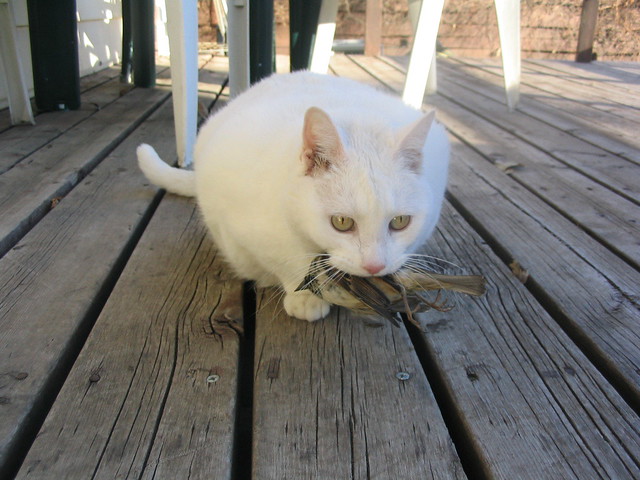Finding Loons in Lake County
Common Loons migrate through Lake County here in northern Illinois in early spring. I grew up in the northern Chicago suburbs, but until I became a birder I had no idea that loons passed through our lakes during migration. It wasn’t until 2009 that I saw loons for the first time.

Common Loons by Gary J. Wege by U.S. Fish and Wildlife Service – Midwest Region, Creative Commons on Flickr
Judging from some of my blog visitor statistics, there are more locals interested in finding loons during the brief time they visit our part of the state. I’m no expert but I do have some tips for finding loons in Lake County, Illinois.
When?
When can birders find Common Loons in Lake County? The time to look for Common Loons in Lake County is right now. At least two area bird clubs offer annual loon-finding trips. These trips are free to everyone – you don’t have to be a member. The trips run as caravans and you can end your day after any stop on the route. Last week we joined Lake-Cook Audubon on their Loons of Lake County trip. Dave Johnson leads a Looney Trip each year for the Evanston North Shore Bird Club (we joined the Looney Trip in 2009). This year’s trip will take place April 2nd. These trips generally occur during the last week of March or the first week of April. With migration, anything goes, but generally this time period will be your best bet to find loons.
Where?
Where is the best place to find Common Loons in Lake County? You don’t have to join a club outing to find loons (although both clubs mentioned above are a lot of fun!) in Lake County. While there are a few glacial lakes that are probably good bets year to year, if you’re limited in time it’s a good idea to keep an eye on what other area birders are seeing before venturing out on your own. There are a few great resources for this. One is the Illinois birding mailing list (listserv) IBET. You don’t necessarily have to subscribe because recent posts are archived to the public online: Recent Postings from The Illinois List. At the time of this writing, I see posts from other birders reporting loon sightings in Cook, Jasper, and Winnebago counties, plus a few posts about a “Loonapalooza” in the Chain-o-Lakes area (Lake & McHenry counties).

Breeding plumage Common Loons on Diamond Lake, photo by blogger
Another great place to check is eBird. A quick look at the eBird entries for Common Loon in Lake County, Illinois in March and April over the last five years reveals a few hotspots and recent sightings: Fox Lake; Long Lake; Independence Grove; Butler Lake; Lake Zurich; and Diamond Lake. If you’re going out on your own, keep in mind that loons (also known as Great Northern Divers) prefer larger, deeper lakes.
Why?
Why do birders look for Common Loons in Lake County during spring migration? Loons are considered medium-distance migrants, spending the winter in coastal areas of North America and breeding across much of Canada and far northern areas of the Great Lakes in the United States. In the spring, they take on their beautiful, striking black-and-white breeding plumage. Loons are typically easier to find in Lake County during the spring migration; fall migration is more protracted so you’re less likely to find them in quantity during the fall. And while loons can be vocal all year, you’re more likely to hear their haunting wail calls during the spring as breeding season approaches.

Common Loon at Gloucester Harbor by Dendroica cerulea, Creative Commons on Flickr





























